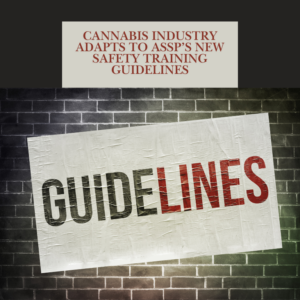Strategies for Reducing Workers’ Compensation Litigation

We’ve all seen eye-catching advertisements for work-injury attorneys on billboards, TV, and bus stop benches. However, these ads are rarely the sole reason an employee hires a lawyer. There is almost always a specific underlying cause that prompts them to respond to such advertisements. Identifying and addressing these causes can help in developing a plan to prevent litigation.
Understanding the Litigation Triggers
Litigated workers’ compensation claims are significantly more expensive—often 10 to 12 times more—than non-litigated ones. Even a modest reduction in the litigation rate can substantially impact overall program costs. The initial step in creating a litigation avoidance plan is to understand why employees seek legal representation. This involves a thorough review of claim notes and documents from the period immediately before the notice of representation. Although this process can be daunting, it is crucial. Here are three common triggers for litigation:
- Job Security Concerns: Employees often fear that a work-related injury or filing a claim might jeopardize their job security or lead to discrimination. This uncertainty can drive employees to seek legal counsel to protect their employment status.
- Threats to Workers’ Compensation Benefits: A perceived or actual threat to their entitlement to workers’ compensation benefits can lead to litigation. This might stem from delays in compensability, denial of medical treatment, or failure to pay temporary disability benefits when the employee believes they are owed. Feeling deprived in this way can quickly drive employees to hire attorneys.
- Lack of Communication: Often, injured employees turn to legal help due to a lack of communication from the carrier or third-party administrator. Crucial questions like “Where do I get treatment?” and “When will I receive a check for lost time?” need clear answers. If these questions are not answered, employees might feel neglected and seek legal representation to get the information they need.
Developing a Litigation Avoidance Plan
To effectively reduce the likelihood of litigation, it is essential to address these triggers. Here are some strategies:
1. Enhance Communication:
- Establish a Clear Communication Plan: Develop a structured communication plan that outlines when and how often injured employees will receive updates about their claims. Use multiple communication channels such as phone calls, emails, and letters to ensure information is received and understood by the employee.
- Dedicated Claim Representatives: Assign a dedicated claim representative to each injured employee as the primary point of contact for all claim-related inquiries and updates.
- Timely and Transparent Updates: Provide timely updates on the status of the claim, including approval of medical treatments and expected timelines for benefit payments. Be transparent about the process and any potential issues that could arise.
- Educational Materials: Offer educational materials that explain the workers’ compensation process in plain language, covering what to expect after an injury, how to navigate the claims process, and employee rights and benefits.
- Regular Check-Ins: Schedule regular check-ins with injured employees to address any concerns or questions they may have, demonstrating the organization’s commitment to their well-being.
- Feedback Mechanisms: Implement feedback mechanisms such as surveys where employees can express their concerns and provide feedback on the communication process.
- Collaborative Approach: Involve the injured employee in discussions about their treatment plan and return-to-work options to foster a collaborative process.
- Training for Supervisors and Managers: Train supervisors and managers on how to effectively communicate with injured employees, showing empathy, providing support, and relaying information accurately.
2. Clarify Employment Security: Reassure employees that their job security is not at risk due to filing a claim through transparent policies and consistent communication from management.
3. Streamline Claim Processing: Minimize delays in claim processing and ensure that employees receive their entitled benefits promptly, including timely approvals of medical treatments and payments.
4. Provide Supportive Resources: Offer resources such as dedicated claim representatives or helplines to address employee concerns promptly, preventing feelings of neglect and reducing the likelihood of litigation.
Expert Assistance
For a comprehensive assessment of why your employees hire attorneys and assistance in developing a litigation avoidance plan, consider consulting with experts in the field. Experts with extensive experience in workers’ compensation defense and risk management can advise on reducing claim inventory, program costs, compliance issues, and streamlining processes for self-insured and high-deductible programs.
By proactively addressing the common triggers for litigation and implementing effective communication and support strategies, organizations can significantly reduce their workers’ compensation litigation rates and associated costs. A proactive and empathetic approach not only helps in managing claims more effectively but also fosters a supportive work environment that contributes to the overall well-being of employees.
FAQs:
- What are the main triggers that cause employees to seek legal representation for workers’ compensation claims?
The main triggers include job security concerns, threats to their workers’ compensation benefits, and lack of communication from the carrier or third-party administrator.
- How can organizations enhance communication to prevent workers’ compensation litigation?
Organizations can enhance communication by developing a structured communication plan, assigning dedicated claim representatives, and providing timely updates and educational materials to injured employees.
- What strategies can be implemented to reassure employees about their job security after filing a workers’ compensation claim?
To reassure employees, organizations should clearly communicate job protection policies, consistently reinforce these messages from management, and involve employees in discussions about their treatment and return-to-work plans.











